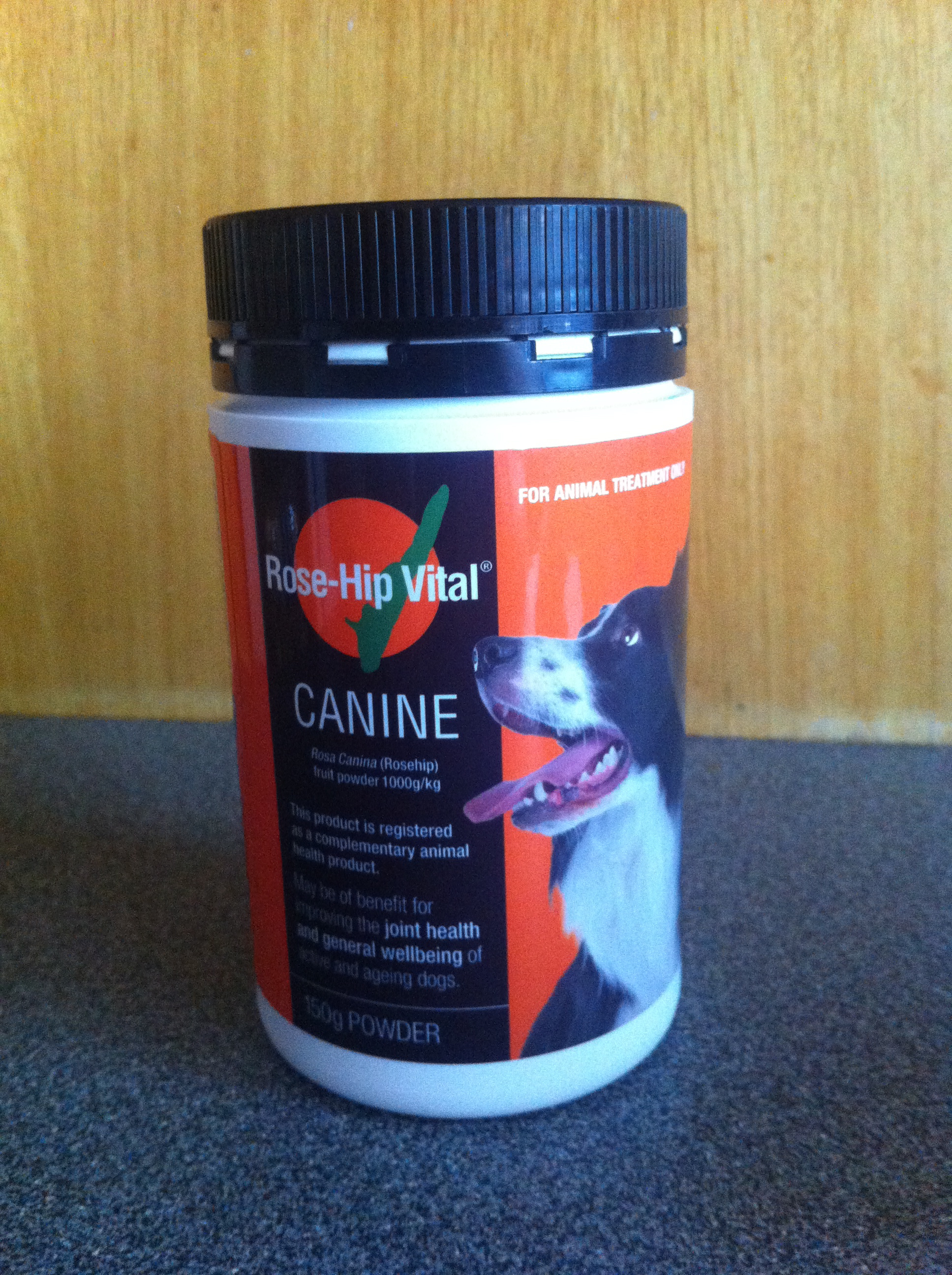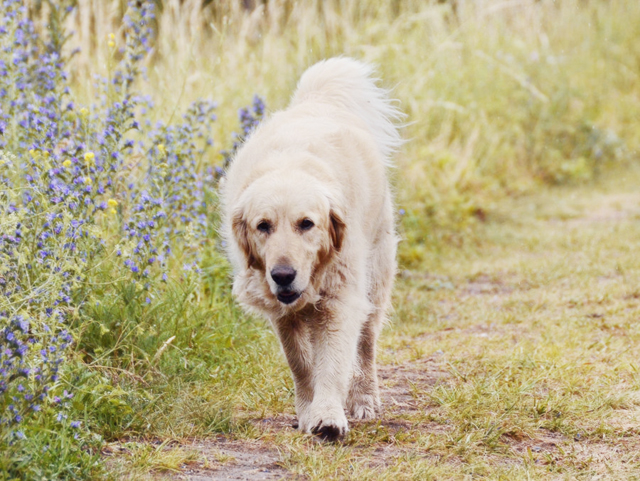The hidden disorder in staffies
Have you heard of the neurometabolic in stafforshire bull terriers, commonly called L2-Hga (L-2-Hydroxyglutaric aciduria)?
I didn’t either, until I read Jazz’s story. This disorder sees elevated levels of hydroxyglutaric acid in urine, plasma, and cerbrospinal fluid. L2-Hga has affects on the central nervous system, and symptoms ususally occur 6-12 months old. The symptoms normally include uncoordinated movement and epilepsy like behaviours.
This disease is found on one gene that is autosomal recessive, so easy to breed out if breeders DNA test and breed only carriers to clear dogs, and aim to produce clear dogs long term. Unfortunately, not all breeders are committed to this cause.

Wildbunch Knight in Amor (“Joker”) is not L2-Hga affected – but boy is he cute!
This is Jazz’s story, written by a staffy owner in South Australia.
My husband, John, had always wanted a female, brindle staffy. In December 2008, John drove a distance and returned to surprise our boys with our staffy puppy who was born in October, 2008. We named her Jazz. Staffies hadn’t excited me greatly – I had never known a staffy and I already had my beautiful cocker spaniel, Merlin who was three at the time.
Before John bought Jazz, I did some research about Staffies and understood that they should be L2HGA and HC clear by parentage. I explored this a bit further and advised John. John enquired about the condition with our local vet (also a staffy lover) and with the registered breeder who sold us our puppy. Neither the vet nor the breeder was aware of L2HGA. Our boys, Flynn and Archie, fell in love with Jazz immediately. She became their best friend. We had lots of fun times with two boys and two dogs in our large backyard. Merlin and Jazz became great friends and Jazz soon learnt that Merlin was a great play mate.
One morning, at the end of January, Jazz freaked out and we couldn’t understand why. She was racing around, barking and panicking and seemed quite disturbed about something. It was like she was trying to get away from herself. We didn’t know what the problem was. We took Jazz to the vet; he described her as lethargic with possible abdominal pain. She was admitted for observation and remained lethargic. We brought her home in the afternoon and she seemed like her normal self.
Jazz seemed to have a problem with one of her legs. Sometimes she didn’t put her weight on it. She also seemed to run a bit strange – she’d run forwards and in a wonky kind of way.
In the middle of March, Jazz had another episode similar to what had occurred at the end of January. We took her to the vet again and he recorded that she had “sudden onset of barking and apprehension which continued for about 20 minutes, all systems normal on examination, no apparent cause”.
I took both dogs on a walk on 11th April, 2009. Jazz was five and a half months old. It was a brisk walk and, despite some short walks around the block this was Jazz’ first real brisk walk. Jazz seemed very excited when she was on the walk. So much so that someone commented “the dogs love their walk don’t they?”. This was Jazz’ first and last ‘normal dog walk’. We had been walking for 15 minutes and Jazz, while still on her lead, looked around and then ran off the footpath into a shaded area under trees. Jazz raced around in circles on her lead, she wet herself, was panting and barking and had diahorrea. It took me 15 minutes to move both dogs around the corner into a quieter area where there was a tap. Jazz continued to race around on her lead in a circle in a mad panic, diahorrea was shooting out, she lay down and then stretched out, she was yelping and wouldn’t move. As a mother of two young children, this was a rare occasion that I had gone out without my mobile phone. Jazz wouldn’t move on, I thought she was at risk of a heart attack or something and that she may die. I tied her to a gate and raced to a nearby shop with Merlin. I tied Merlin to a heavy chair and raced into the TAB (John liked to have a bet or two). I raced to the counter, quickly explained I was John’s wife (John who likes to have a bet), advised that John’s dog was in trouble and asked if I could use the phone. The TAB owner was more than happy to help. John turned up in the car shortly after and picked Jazz up and drove her home. John spent some time calming Jazz down and she eventually seemed fine.
On 14th April relatives called past with a small fluffy dog. Proudly, we brought Jazz out the front to show them how much she had grown. Jazz lost balance a couple of times and fell over. It was at this time that my mind wandered back to L2HGA as I had remembered the reference to ‘wobbly gait’. I checked the internet, read the description of L2GHA and I remember that night suggesting to John that Jazz may have L2HGA.
The husband of a friend is a vet and I mentioned Jazz, our experience and my thoughts, to him. He wasn’t aware of L2HGA and he advised that it could be any of a number of things. I agreed with him, his response was appropriate, I wasn’t qualified to make a diagnosis and he had not met or assessed Jazz.
There were further incidents in May, June and July, (an open fire, a loud noise outside and another open fire) all resulting in arching of the back, wobbly gait, constant barking and panic usually later followed by further wobbly gait.
Our family and friends were concerned about Jazz’s behaviour – generally they commented that something is not right. Flynn and Archie understood that Jazz had special needs and that her immediate family needed to provide her with extra help at times to make her feel OK.
I had a lengthy conversation with a vet whose name was on the internet on the L2HGA page and a member of the Staffordshire Bull Terrier Club. He explained that there is no treatment or cure for L2HGA, of all the dogs tested he had only had one ‘affected’ result.
Jazz was tested for L2HGA in September 2009 with the results confirming that she was “affected”. We expected this would be the test result and it provided some explanation of the occasional behaviour that we found difficult to observe but had come to expect.
This diagnosis gave us an opportunity to accept that Jazz had a genetic disorder. We understood that positive or negative excitement often caused Jazz a problem. This had never stopped her racing around the back yard with so much energy and having so much fun with Merlin. They raced around and played until Jazz was too exhausted to play any more. Merlin had always tired earlier but seemed to enjoy the energy of his heavy set young friend.
John advised the breeder of Jazz’ condition. The breeder was apologetic and offered to provide us with another puppy. We felt the breeder needed to accept responsibility for selling a L2HGA puppy. John drove the distance again and collected what we briefly owned and knew as ‘Little Jazz’. We sold Little Jazz to a lovely home. We had not intended to replace Jazz. Jazz was still our special dog. We were lucky to spend the time we had with Jazz and we were also glad that, despite seeking an adventurous, go anywhere pet, we had a very gentle, loyal pet and we were prepared to assist her with her special needs. We were pleased that she hadn’t been bought by someone seeking a show dog because, despite her willingness to please, Jazz would not have been able to deliver.
Jazz was happy, always loving, a great play mate for Merlin, Flynn and Archie and she was quite normal at least 95% of the time.
As a family, we had learnt how to calm her down after one of her episodes and how to help her recover. That was our objective and, from our observation, we think that is what we achieved. Flynn and Archie learnt how to help Jazz recover. She would sometimes have a little barking episode around my bedtime or just before I was due to wake up in the morning. I would heat some milk for her and reassure her and she was generally OK.
We were somewhat proud of our ability to ‘manage’ Jazz’ condition. One day we took Jazz and Merlin to the local dog park for a play. They were the only two dogs there the whole time and they had a great time. We were happy that we had taken Jazz out and it seemed to have been a success. A few hours later, Jazz stood still in the back yard and then did back flips like an uncontrolled wind up dog. We have a great, large backyard that is enjoyed by the whole family. Jazz no longer left her backyard.
We had many more random episodes and we dealt with them as they arose. Jazz recovered and life went on as normal.
We booked a dog friendly holiday in January 2011. At the last minute we decided to leave the dogs at home so that they were in a familiar environment. This was our only holiday for the year and we decided that there was too great a risk in taking Jazz with us. We knew she was most comfortable in her own familiar backyard.
Flynn, Archie and I had given John a hammock for Christmas. When John was lying there, Jazz decided that this was a good place to be and she decided that a rest alongside John in the hammock was a good way to end the day. When I saw Jazz do this I thought about taking a photo. As an obsessive hobby photographer, it was a bit unusual that, on this occasion, I decided not to race in and grab the camera. I’d do it next time. There was no next time. Jazz had an episode in the morning on 14 January, she couldn’t stand up. She couldn’t stand up that evening and she couldn’t stand up the next morning. John took Jazz to the vet and Jazz went to Heaven on 15 January 2011 – aged 2 years and 2.5 months.
We hope that by telling Jazz’ story, this will help to eliminate L2HGA. We also hope that the owners of every staffy puppy will not have the worry associated with living with a dog with such a significant genetic disorder. The opportunity to share a lifetime with a staffy should not be cut dramatically short by the effects of L2HGA.
Read more about L2-Hga from the Staffordshire Bull Terrier Club of Western Australia or the Swansea SBT Ring Craft Club.




 So, of course, when
So, of course, when 
